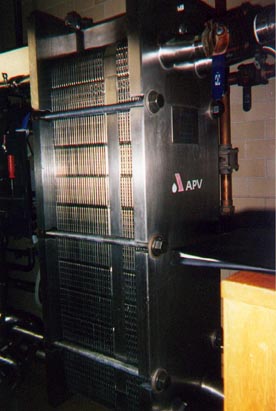The biogas from a home biogas plant need only be compressed by placing a weight on the biogas collection and storage sack or dome over the digester tank, and possibly filtered through water, before it can be piped directly into a cooking stove,
This is truly cheap and simple to do, and the initial "fuel" or feedstock that the biogas digester is made from is simply the waste organic material produced by the family or community which runs the digester.
In rural communities in the developing nations, the following list of advantages normally will apply:
1. Biogas production needs less labour than tree felling, especially when the trees are far away from the home and need to be transported.
2. Trees can be retained. Using biogas avoids the need for constantly removing trees for firewood allowing forests and woods to recover and grow, bringing shade, shelter, and forest products, plus maybe food as well.
3. Biogas is a quick, easily controlled fuel. Turn it on at a tap, light it and the heat is there to use immediately. In contrast, using wood takes time to get the fire warm enough, and the fire needs attending for that period as well.
4. Biogas emits no smoke when burnt correctly. It has no smell when pure (unless there is a leak and then you need to know of the leak, in any event). This means massively reduced eye and respiratory irritation, and extends the lives of all who use smoky wood stoves.
5. Clean pots! Yes. Pots and dishes, in fact, everything remains much cleaner when using biogas as a cooking fuel instead of wood.
In reality, these are just a few of the examples were using biogas for cooking instead of wood, or even fossil fuel alternatives such as LPG in cylinders, (which is so expensive in the developing nations), has so many advantages.
So, why aren't more people doing it? Let us read your opinions please, in the comments box below.

Image by cizauskas via FlickrThe food sector has invested heavily in bioenergy projects such as biomass boilers and anaerobic digestion but where heat which is generated or used in one part of a process is lost rather than reused, according to HRS.
One of the most common situations where heat is wasted is where businesses have installed an AD plant to manage their food waste and factory by-products, said Matt Hale, international sales manager, HRS Heat Exchangers.
Heineken, Weetabix, Maltesers & Ovaltine
“In most cases the primary energy output is electricity supported by Feed-in-Tariffs (FITs) which is used on site or exported to the grid,” he added.
“The electricity is generated by a gas engine combined heat and power plant, but what happens to the heat? In some cases it is used for processing or heating the food factory, but often not to its full potential.
“Implementing HRS heat exchanger technology, to use waste heat from one process to fuel another, could save food factories 7.5 pence per kWh² used.”
One such company is Muntons malted ingredients based in Suffolk, UK which supplies malt to Heineken beer, Weetabix, Maltesers and Ovaltine.
The firm uses 250,000 tonnes of barley to manufacture 180,000 tonnes of malt pa, which it sells the brewing and distilling industry and makes a range of malted ingredients used in food, confectionery and baking.
The company is currently putting the finishing touches to its £5.4m on-site anaerobic digestion (AD) plant. Integral to the success of the 499 kW facility is a 3 Tank Batch Sludge Pasteuriser System with Energy Recovery from HRS Heat Exchangers, which will help turn 80,000 tonnes of Muntons’ liquid malt waste into biogas and organic fertiliser.
This biofertiliser will be then be applied to local farmland, helping the company’s network of growers to produce the barley needed to make Muntons’ malt.
“For Muntons, this whole project has been about maximising efficiency. Although they have an abundance of heat, they still wanted to recapture what they could and our heat exchangers will provide at least 40% heat regeneration,” said Hale.
AD is a fast-growing industry in the UK
He added AD is a fast-growing industry in the UK and has seen a steep rise in operational plants: from 192 in 2009 to 335 in January 2015. AD could deliver 10% of Britain’s domestic gas demands and reduce UK greenhouse gas emissions by 2%+ if industry reaches its potential: 40TWh of energy.Via HRS heat exchangers creates anaerobic digestion plant for Muntons
